Since the introduction of multi-mode and multi-frequency power amplifiers, people and the author have been discussing the trend of modularization of the RF front-end and slowly moving towards the idea of ​​modular design. RF engineers will not have to do any work afterwards. All work is chip supply. Business to complete. In actual fact, today we are based on this understanding to talk about the importance of mobile terminal RF front-end modularity in the industry chain and the author's own views.
1, the front-end of the RF front-end modularWhen we did 3G 67 years ago, most of the projects used discrete plans to design. Why is there no modular design idea at that time? This will bring up the entire history of the development of wireless communications to talk about the different requirements for the design of products in each specific period of time to discuss.
We used to recite the past frequently: 3G includes, WCDMA, TDS-CDMA, CDMA2000 and WiMAX. In fact, from the point of view of these several types of systems, the first three are left. The first three are left to have the most WCDMA, and we will use WCDMA as an example. WCDMA frequency band was only Band1/2/3/4/5/8, the most commonly used only Band1/2/5/8, most projects will also support these four bands at most, and the most popular on the market is the legend The 3X3 packaged PA is compatible with all manufacturers, as shown in Figure 1. In addition, GSM four frequency bands can form a mobile phone with a global frequency band. In addition to feature phones, smart phones are just beginning to develop. Therefore, the space left for RF is very large, including design area and antenna. Performance is not so high now, so the entire industry chain will not think of RF front-end modular products, you can imagine if you do a modular product at that time, or is a big sale Great fortune, or no one is used, because at that time the technology is really not a threshold, then the four-piece RF front-end is: amplifier PA, duplexer DXP, filter Filter and antenna switch ASM, and now WiFi is the same. If the modularity is successful, we really only need to do the test. But at that time, many manufacturers also had the concept of RF front-end modularization. Figure 2 is to integrate discrete IF and low-frequency PA, so that the area can save a lot, although this integration does not have big sales, but it marks the RF The idea of ​​front-end modularity has begun to sprout.

Figure 1, 3X3 Package Discrete PA
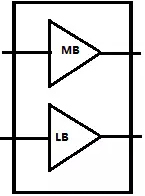
Figure 2, middle frequency + low frequency dual-frequency PA
Starting from 2012, LTE has already begun to appear. At the beginning, the frequency band is still relatively small, that is, upgrading several bands of WCDMA to support LTE. Of course, the radio front-end includes PA (LTE PA optimizes 3G PA. , improved linearity, downward compatible, can support 3G), duplexers, filters and antenna switches have inherited the 3G time, then everyone also did not expect LTE to develop in the next two years Soon, in fact, that year is a transitional period, but unfortunately, there was no decent multi-mode multi-band PA at that time.
By 2013, LTE began to develop by leaps and bounds. With the increase in the crazy increase of commercial bands, we have to ask whether each manufacturer has a large number of frequency band PAs during development. Fortunately, the discrete PA of most frequency bands at that time. There are all, most of the frequency band duplexer is also there, but at the same time encouraging is the emergence of multi-mode multi-band PA, with GIPO controller, which is also a significant degree of change, that year, It is so faintly visible memory in mind, that year really began large-scale commercial LTE. Such as 3 is multi-mode multi-frequency PA, it can be said that this structure of the PA life cycle has not yet ended, we are still in a large-scale application, but is to replace the past GPIO controller into a miracle and just appear MIPI The controller has a variety of control methods. The principle and role of MIPI do not need to go into details here, Du Niang waiting for your advice.
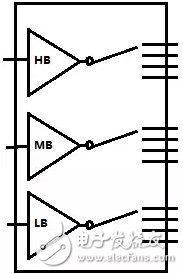
Figure 3, LTE phase multi-mode multi-frequency PA
Probably from 2015, many RF front-end module manufacturers began to introduce modules that integrate amplifiers, duplexers, filters, and antenna switches. When engineers develop products, they only need to successfully configure the MIPI registers to drive the entire system. As for the module, it is no longer necessary to do hardware matching and debugging of the band by frequency band. From this point of view, the RF front-end development may have entered a new era and it can be discovered, including now and perhaps even later. During the year, this modular design is still very popular. Figure 4 is the so-called all in one module. Large mobile phone manufacturers now use this modular design solution for high-end models. We will share examples with you later.
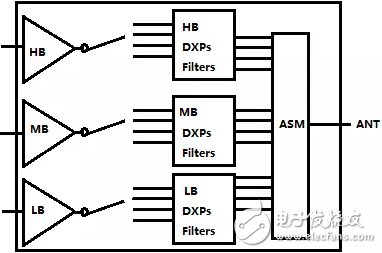
Figure 4. RF front-end module in LTE phase
In fact, to sum up, the driving force behind the design of modular RF front-end solutions is: The development of LTE brings multi-band requirements, and the increase in the functionality of mid- to high-end models has led to an increasingly tight RF front-end layout area on mobile motherboards, and a modular design. The program can shorten the project development cycle and reduce the problems that arise in the development process.
2. Design difficulties of RF front-end modulesAs discussed above, a modular approach can shorten the project development cycle and reduce various problems encountered in the development process, as follows:
First, "There must be a road before the car to the mountain" is no longer feasible. To grasp the market demand, in fact, this is not just a technical problem, to put it plainly that the technology is the program integration, I believe that experienced manufacturers can grasp technically, the more difficult is that the design of the RF front-end module can meet Whether the market demand can meet the needs of customers. For example, we all know that big and big things are the best, but if a module is designed to be large and complete, it can be included in the global frequency band requirements. This is certainly the best, but it is bound to be a module. The cost will be greatly increased. To the customer, perhaps people do not need so much demand. Perhaps people do it according to the region. Although your product can meet the customer's needs, it will also waste a lot of content without demand, and compete in this industry. In the era of intense and hard-to-price, the price/performance ratio is bound to drop a lot. This is just an example. In fact, the direction of doing modular things is particularly high, and the risks are particularly great. Unless customers like Cai Guo and the stars are rich, customized and customized, they can sell their products. It is the sun industry that everyone wins.
Second, the design of standard parts and non-standard parts. Standard items are designed with a low risk, but latecomers are bound to not be able to occupy too much of the market. They can only follow people behind to drink porridge; non-standard parts may not be the same, they are the first to eat crabs, if If it is done, everybody likes to use it, then it's a fortune to make a fortune, but if everybody doesn't catch the cold, waiting for oneself is a pile of death. To be honest, highly integrated design is difficult to do standard parts, because the design ideas and technologies of each project are different for each manufacturer. This is also very obvious in the fruit of the fruit. Most of them are customized by themselves. In fact, this is beneficial to both the supplier and the customer. It can reduce the risk of product supply, and it will not let the supplier have any risks.
Third, the module design cycle and the time to market. High integration of the module design cycle must be relatively long compared to the low integration of the design cycle, which requires a thorough understanding of the trends in the listing window period, if the cycle is too long, did not catch up with the product market window, It means that you have been left behind by the market. No matter how good things can only be seen next to others making a fortune.
There have been peers to ask, what is the way out for the communications industry? In fact, this issue is relatively large. I think it may be better to answer in a narrow and broad sense.
The communication in the narrow sense, especially the people we do wireless communication, is either the base station, or the mobile phone, or the microwave field, etc. There are reasons in each field and the existence life cycle. In terms of our mobile terminals, in the 2G era, everyone is confused about what the next generation is? At that time, 3G was very popular in the slogans of training institutions. In fact, these people are really powerful. They are either in the industry or have interests in the industry. They have long predicted that 3G is a trend. Of course, 3G technology is also A means of earning money, of course, they may themselves think that 3G is 3G technology, and do not understand that there are so many in the 3G doorway; when 3G is done later, everyone says 4G is still far away. 3G has arrived at such a fast rate. With HSPA and HSPA+ technology, it is more than sufficient. Then we were rural people at that time. Perhaps we do not understand what is meant by the development of technology and what is called technological innovation. To be honest, Joe helped the owner to make a great contribution to the development of 4G. Something called a smart phone grew from a fruit-only phone, although there were only cell phones available before. Of course, Android is also the biggest contributor to the popularity of smartphones among the general public. The advent of smartphones has also brought 4G to a new height. Now everyone can say that everything is in hand and everything is going well. In the past few years, the author also believes that there is no possibility of cashless consumption. Our traditional people like to install banknotes in their coat pockets to feel safest. But today, we’re out. Now we can basically take a cell phone and we can do it all over the world. The code will make you pay for it. Let's think again, what will be our next generation terminal? In fact, the development of each technology is backed by people’s strong desires. Can you also analyze the wireless communications in the narrow sense of the end of each communication industry?
Broader wireless communication is even more, as long as we can say that most of our industries are now inextricably linked to wireless communications and complement each other in our lives, so these are the development thrust of the communications industry. . Somewhat far away, continue the following topics.
3, modular design requirements for RF engineersReturning to the topic of this paper, the modular development of our radio is also playing an irreplaceable role in the development of the wireless communications industry, or answering a few questions that have just begun on many peers:
First, what is the future of RF engineers?
The people who asked this question are all those who really want to do things. We all have the common problem that people who do technology have to do more and then forget to see what the outside world looks like. "If you don't know what you really are like, you will only be in this mountain." You can answer this question. Many trends are difficult to transfer by the will of the individual. We can only accept the reality. Just like the trend of RF modularization, we need to think of what we can do. Most RF engineers think that debugging and matching is the job. We can only say that tuning and matching are the most basic basic skills of RF engineers. It can be imagined that modular products have allocated a large part of this work to the eradication of The rest of our work is to understand how to evaluate the choice of a module, how to choose a suitable module, why the fruit phone will choose this module, why the star phone will choose that module, why the module integration Higher and better performance, why is this module only integrated part or a castrated version? These are the questions we have to answer now. The work to be done to answer these questions is what most of our RF engineers have to do.
Second, to take the first point, how can we answer those questions? What kind of knowledge and technology should we go to master?
It is very simple, here you can summarize the outline of the previous "a self-cultivation of RF engineers". The foundation is very important. Of course, many specific problems can only be seen and solved in the first-line work such as basic debugging and testing; in addition, it is an improved radio frequency engineer, this level. RF engineers are people who are more popular in the RF industry and can basically find a satisfactory job. If they go up, they are the system-level engineers who can grasp the direction. Only under the previous two levels can they become a qualified system. Engineers are just as likely to be, or many years later, as an RF engineer. There is no discrimination here, but everyone's division of labor is different. When it comes to the end, we are in the modular product development. The most needed is the system engineer. The actual evaluation results are basically the same as the final shape of the product. If you want to understand the details, you can check out an RF engineer. Self-cultivation, and I will not repeat them here.
4, the advantages of modular designThe trend of RF front-end modularization is a factor that drives the demand. It is only when there is a demand for such technology. It is not such technology that has such a demand. Here is a brief explanation of why we need RF front-end modularity:
First, the trend toward miniaturization of terminals. Now that the miniaturization of the terminal has made it impossible for us to design with a PA plus filter plus switch, at first, when you are confident that I can definitely make it, often the facts always bring a heavy blow. Without helplessness, the combination of countless frequency bands and CA always leave us confused. The figure below is a disassembled drawing of Guoguo 7. You can imagine how big the main board we can use is, especially the RF circuit:
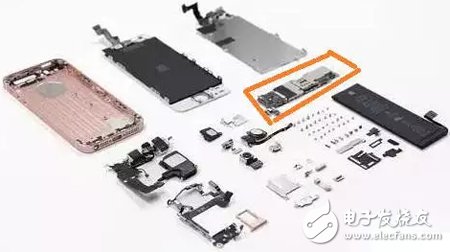
Figure 5, iPhone 7 motherboard size ratio
Second, it's easy to design. With the development of LTE, there are now dozens of frequency bands defined on 3GPP. In general, there are more than a dozen frequency bands to be supported on the terminal and the global mode, plus the implementation of carrier aggregation technology and MIMO technology, so that the RF front-end design Complexity rises linearly. At the same time, quadrants, hexapods, crossovers, and other abnormal devices have appeared, allowing devices on the RF link to reach more than five or six types, and the link budget has been greatly reduced. Certainty, this will not give us the time considered, the possibility of separation of the implementation of the program is almost 0, the market's products are basically modules interconnected nested to achieve, you can see the following picture is several popular on the market The modular use of the flagship:
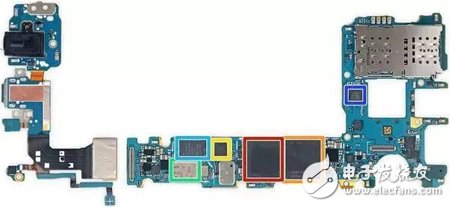
Figure 6, Samsung S8 RF front-end layout
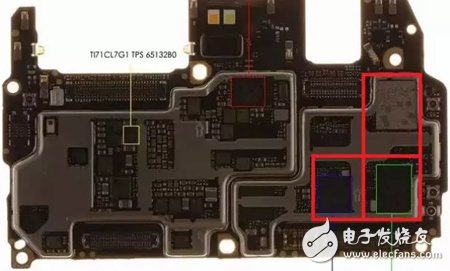
Figure 7. Huawei P10 RF front-end layout

Figure 8, RF front-end layout of iPhone7
Third, high standards of mass production consistency and low PPM. As the second point, if you use discrete circuits to build RF circuits with complex requirements, it is difficult to ensure consistency in mass production. In order to ensure the low PPM of the products under the premise of ensuring the PPM of each device, you may wish to estimate for yourself. Is it like this;
Fourth, simplify troubleshooting. RF front-end modular products will enable RF engineering to greatly improve the efficiency of divisions to handle faults, and do not have to use complicated and inefficient experimental areas to find problems step by step in complex systems, provided that the module itself has passed through various products. Tested.
Fifth, easy maintenance. Radio frequency problems have always been the most problematic issue in handset hardware. The modular RF front end can improve the efficiency of RF engineers doing RMA analysis, and can also improve the efficiency of after-sales product maintenance and reduce the damage rate.
In short, the trend of RF front-end modularization has come and we will have more and more tests for our RF engineers. This industry will have even greater development prospects.
9 in 1 usb c adapter,10 In 1 Usb C Hub,usb-c multifunction adapter,type-c all-in-1 adapter macbook,USB C HUB,best USB-C Hubs
Shenzhen Konchang Electronic Technology Co.,Ltd , https://www.konchangs.com